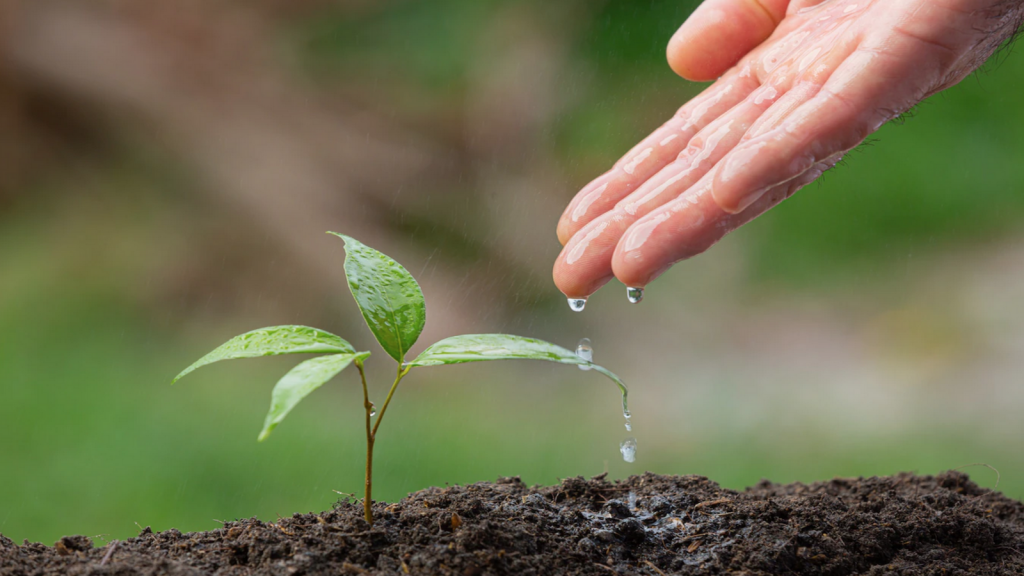Conservation Agriculture is a type of farm practice that prevents losses of arable land while regenerating degraded land by minimizing tillage, soil disturbances, covering of soil with crop residues and live mulches and crop rotation. It serves as a way of achieving sustainable agriculture.
Ideally the planting is done directly in to the soil by making holes with a hoe without tillage. In addition the soil is covered as much as possible through mulching, use crop residues and planting special cover crops. As a consequence the soil will be protected from erosion and weed growth suppressed. Crop rotation maintains soil fertility and at the same time controls pests and diseases. As a result the use of agrochemical is reduced.
Tillage is the preparation of land in terms of digging, overturning and stirring of the soil before planting. Types of conservation agriculture tillage include:
Mulch tillage
The crop residues are spread and left on the surface. Its benefits include increased organic matter in the soil, reduction of soil erosion, fossil fuel emissions and evaporation.
Ridge tillage
It involves building of ridges with planting done on the elevated rows and reduces soil erosion and runoff. In addition it allows for easier water infiltration and less evaporation hence faster seed germination and plant growth. However it is not suitable for all fields.
Strip tillage
It is a very effective method in poorly drained wet soils. The farm equipment is used to create slightly raised soil strips. The seeds germinate faster due to warm soil temperatures. Moreover fertilizer can be applied while tilling.
No – tillage
Basically it means growing crops without tilling of the land. It improves the quality of the soil and reduces soil erosion. However in conventional no-till method, higher amounts of herbicide are used to control weed before and after planting. This consequently affects human beings and the environment.
Meanwhile organic no-till method uses crop rotation, roller crimper, livestock and cover crop to manage weed which is better for environment and human health.
Advantages of conservation agriculture include
High yields.
Crop production has reduced over time creating high demand for food and pressure on farmers. The existing farm practices are depriving the soil of its fertility. Ploughing also hardens the soil restricting water penetration and root growth. Therefore the lack of water penetration results in less moisture and soil erosion.
Certainly conservation agriculture prevents soil hardening, soil erosion, maintains soil fertility, and protects the soil hence improved production. That is to say the soil is looser, allowing water, roots and air to penetrate the soil.
Cost reduction.
Normally production cost is expensive. Tilting land, high fuel costs and labour costs are contributing to this. Practicing conservation agriculture reduces production costs and improves yields.
Labour intensity reduction.
The farm practice does not require a lot of workers reducing labour costs. In other words conservation agriculture represents less work as there is no need to plough and weed.
Environmental protection.
This can be achieved in the long run by reducing use of agrochemicals and fertilizer as the fertility of the soil is maintained. Likewise, there will less carbon emissions if use of heavy machinery reduced.
Conservation agriculture is mainly practiced in the United States of America which has the highest number of acres (108.8 million), followed by Brazil with 106.2 million acres and Argentina with 81.3 million acres. It is gaining momentum in parts of Kenya mainly Central Kenya, Machakos, Narok, Nyandarua etc. It can be practiced by small and large scale farmers. Small scale farmers can hoe holes in lines then plant the seeds. The cover crop can be sowed at the same time. Alternatively, an animal drawn ripper can be used when planting. A sub-soiler can be used if the soil is hardened.
Similarly large scale farmers can use sub-soilers, rippers and direct drill planters. Herbicide is to be applied before planting and after planting, just before the crop canopy cover the surface. The crop residues can remain on the field after harvest and cover crop sowed to protect the soil until the next season.
There is a wide range of machines from manual (cheap) to automated (high end) for mechanization. The farm implements can be used to till, plant (seeding), mulch, spray, weed, harvest etc.
Field cultivators, chisel-pointed rippers, sweeps, blades or disks are some of the tools used for tillage. A sub soiler is used for breaking the hard pan. Other implements include seeders (planters) for direct seeding, jab planters, animal and tractor drawn sprayers, hoe and pangas.
Conservation Agriculture is the way to go as concerns sustainable agriculture. On the other hand it is a tall order to change the mind set of farmers for its adoption. Equally availability of suitable machinery and at affordable price poses a challenge to farmers in adopting conservation agriculture. More emphasis should be on sensitization of farmers on conservation agriculture through demonstration farms. Policies should be formulated to include conservation agriculture.
Watch the following video to learn more
